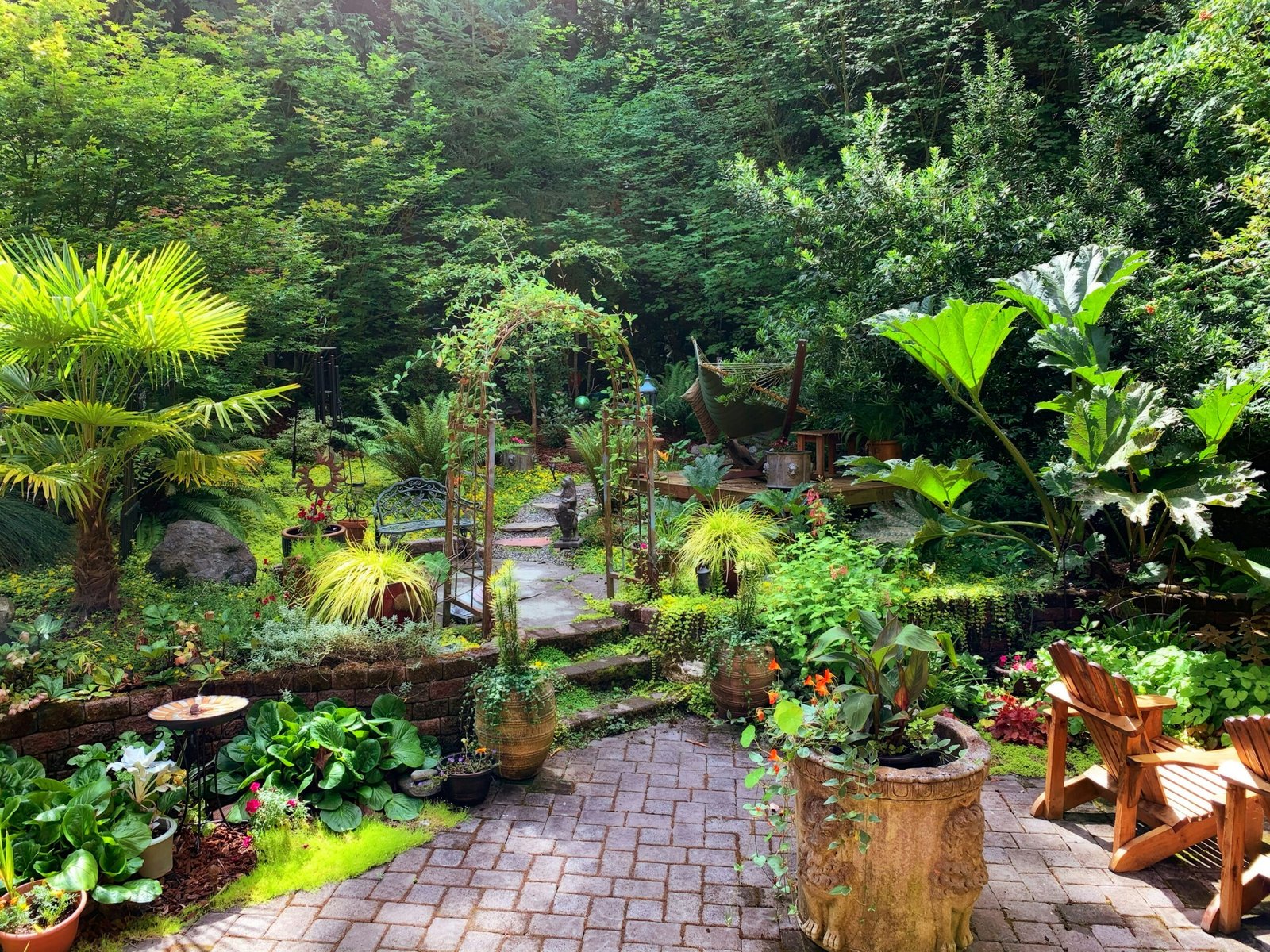Let’s face it—life’s gotten complicated. But what if I told you the secret to feeling calmer, bonding with your kids, and helping the planet isn’t in an app, a therapy office, or a science lab? It’s right outside your back door. “Backyarding” (translation: intentionally using your yard for fun, relaxation, or growing stuff) isn’t just about mowing grass anymore. It’s about turning your outdoor space into a happiness hub. Think of it like this: A well-loved backyard can be as refreshing as a weekend getaway, as bonding as family game night, and as eco-friendly as recycling—all rolled into one. Let’s break it down without the fancy terms.
Your Brain’s Favorite Vacation Spot
How Nature Calms Your Brain (Without the Meditation App)
Your brain gets tired from screens, traffic, and to-do lists. Backyards fix this by giving your mind a “soft focus” activity—like watching bees buzz around flowers or listening to leaves rustle. It’s not woo-woo science; it’s basic biology. When you garden or just sit under a tree, your body actually makes more serotonin (the “feel-good” chemical) thanks to friendly bacteria in soil. One study found people who garden 30 minutes a week are nearly a third less likely to feel anxious than those who don’t.
Pro tip: No green thumb? No problem. Even hanging a bird feeder counts. The key is watching nature, not mastering it.
Sleep Better Without Buying a New Mattress
Artificial light messes with sleep, but your backyard can help reset your internal clock. Families who eat dinner outside or read in a hammock before bed often sleep 40+ minutes longer than those glued to TVs or phones7. Why? Natural light cues your brain to wind down.
Try this: Swap evening screen time for “stargazing snacks”—bring dessert outside and look for constellations. Bonus: Kids sleep better, too.
Family Bonding That Doesn’t Feel Forced
The Magic of “Let’s Build Something Terrible Together”
Remember building forts as a kid? Backyarding brings that energy back. Whether it’s a lopsided birdhouse or a tomato plant that only grows one sad tomato, working together on backyard projects creates inside jokes and shared pride. One survey found families who garden or DIY outdoor projects together argue 22% less than those who don’t.
Real talk: It doesn’t have to be Pinterest-perfect. The goal is laughing when the fairy garden floods or the sunflower grows sideways.
Backyard “Time Capsules”
Track seasonal changes as a family ritual:
- Spring: Bury a time capsule with notes about your hopes for the year.
- Summer: Have a “berry count” competition (who can spot the most ripe ones).
- Fall: Make leaf art and guess which tree each leaf came from.
- Winter: Build snow creatures and name them (RIP Frosty the Unicorn).
These simple traditions create shared memories kids remember longer than expensive vacations9.
Helping the Planet Without Leaving Home
Your Yard: A Mini Wildlife Hospital
You don’t need acres to help bees and butterflies. Even small yards can become pit stops for pollinators:
- Plant “fast food” for bees: Lavender, sunflowers, and rosemary are pollinator favorites.
- Leave the leaves: Fallen leaves shelter butterflies and beetles.
- Add a water dish: A shallow plate with rocks lets bees drink safely.
One study showed yards with native plants attract up to 23 types of pollinators—that’s like running a tiny insect B&B!7
The Rain Barrel Effect
Using rainwater for plants isn’t just eco-friendly—it teaches kids about conservation in action. A single rain barrel can save 300+ gallons of tap water in summer. Plus, kids love watching it fill up during storms (“It’s like a science experiment!”).
Fun fact: Watering plants with rainwater makes them grow better because it lacks chemicals. Your tomatoes will thank you.
Getting Started: No Landscape Degree Required
The “Lazy Gardener” Approach
- Start small: A pot of herbs (basil, mint) or one sunflower plant.
- Add seating: A $20 hammock or picnic blanket makes the space inviting.
- Go wild: Let a corner grow freely—dandelions feed bees, and “weeds” often have pretty flowers.
Family-Friendly Zones (No Hard Hats Needed)
- Snack Zone: Plant strawberries or cherry tomatoes kids can graze.
- Bug Hotel: Stack sticks and pinecones in a crate—insects will move in.
- Art Station: Keep sidewalk chalk or washable paints outside for spontaneous creativity.
Why This Matters More Than Ever
In a world where kids know Amazon Prime better than oak trees, backyarding bridges the gap. It’s not about having the greenest grass—it’s about creating a space where:
- Stress melts faster than ice cream in July
- Family memories grow as fast as zucchini (and with fewer arguments)
- Kids learn that helping Earth can be as simple as planting a seed
So grab a $5 packet of seeds, an old shovel, and your sense of humor. Your backyard adventure starts now—muddy knees and all.
“The best time to plant a tree was 20 years ago. The second-best time is today.” (But maybe start with a flower.)

